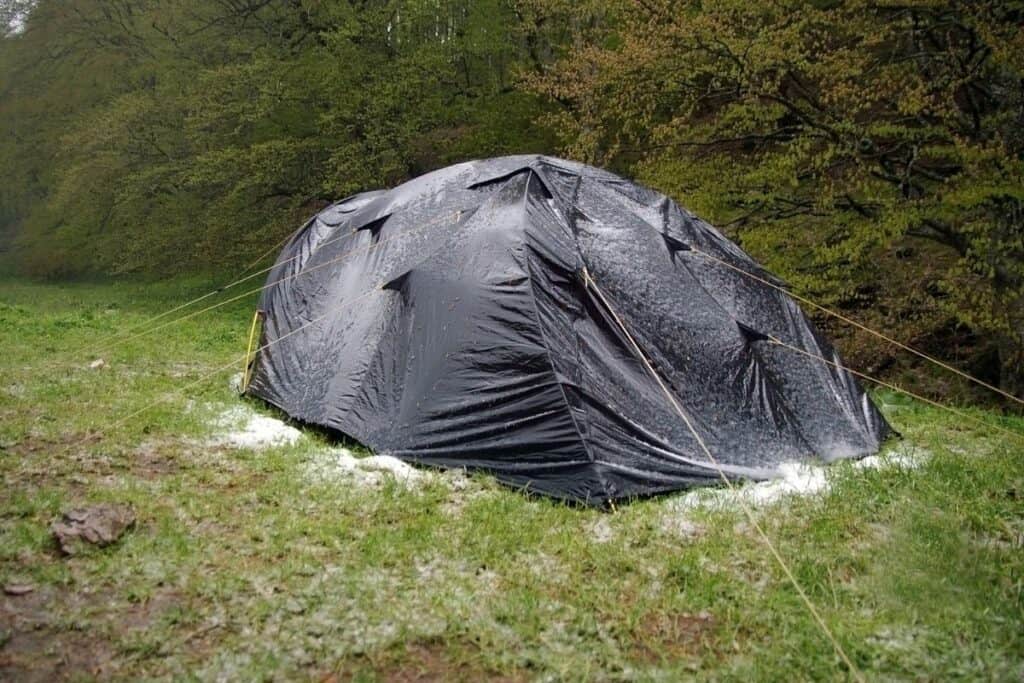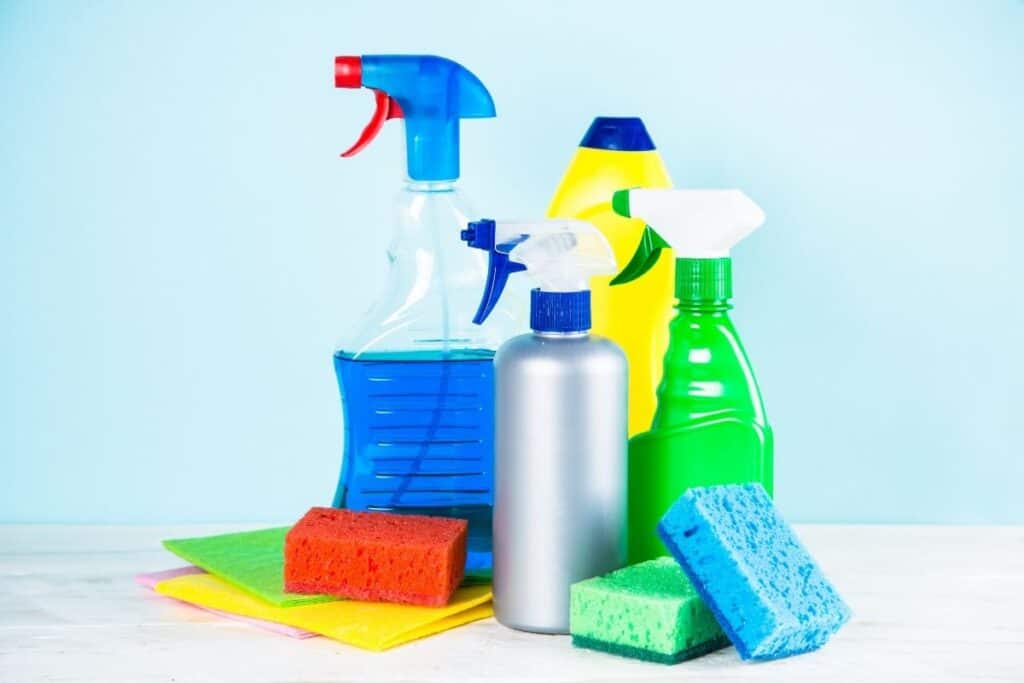
Camping can be refreshing, and for some, it can be a life changing experience. Experiencing nature and all that it has to offer – the newness of the environment and all of the measures you have to take to live outside can be fun and exhilarating.
However, dealing with nature comes with hazards as well. Taking care of your tent and keeping it tidy is of chief importance. The dank moisture, which is abundant in most camping areas, can cause mold to increase.
Tents can get mold or mildew when they are stored before being allowed to fully dry out. The combination of bacteria, moisture, and a protected enclosure create the perfect environment for the formation of fungi.
This article is intended to help you recognize potential mildew problems; moreover, this article will inform you of the best ways to rid yourself of mold and give you preventive measures to keep mold away in the future.
With that in mind, let’s take a look at how to both recognize and remove mold or mildew should you find some inside your tent!
How to Recognize Mold or Mildew in Your Tent
Mold and mildew can appear in a variety of colors and shades. However, they are easy to spot when you know what you’re looking for.
Below is a breakdown of how to spot mold and mildew growing in and on your tent.
Identifying Mold and Mildew
For starters, we recommend that you inspect your tent for mold or mildew after each use, especially if you’re a frequent camper.
When inspecting your bag, be on the lookout for spots that could be suspiciously disguised as dirt but is something much more hazardous.
If you do see any suspicious areas, simply wipe it with a wet washcloth; if it comes off, no harm, no foul, but if it remains, then you could potentially have a mold problem.
Mold generally appears as small blue, black or green spots on the fabric of the tent. Such spots can even be fuzzy. On the other hand, mildew can form similarly but are usually yellow, white, or gray.
There’s a good chance that both can be present simultaneously because moisture and humidity cause both mold and mildew, and there may be a musty smell as well.
Is it Dangerous to Sleep in a Tent with Mold or Mildew?
Mold is not considered poisonous and therefore is not considered life-threatening; however, some mold species – namely black mold – can produce dangerous toxins.
But in most cases sleeping in a moldy tent for a short period presents little to no risk to your life.
However, sleeping in a moldy tent may cause you to experience unpleasant symptoms such as sneezing, itching, coughing, or even a runny nose.

How to Remove Mold and Mildew From a Tent
Finding mold in your tent is a problem that you should remedy immediately. If you have a minor case of mold in your tent, then the first two steps will be sufficient to remove the mold.
On the other hand, if you come to your tent after months of not using it and significant mold is present, then it is recommended that you carry out one of the following options.
Doing so will ensure that your next camping trip is mold-free!
Method #1 – Soap and Water Method
The first step to ridding yourself of pesky mold is to pitch your tent, as it will be much easier to clean it this way. Additionally, make sure that you are outdoors when you are performing this cleaning process to not get any unwanted mold spores in your home.
Next, before you begin spraying and cleaning your tent, spot test your cleaning solution somewhere on your tent to ensure that it will not stain or damage your tent’s fabric.
After the tent is pitched, brush off the mold with a cloth or soft-bristled brush. If you have a canvas tent, use a stiff-bristled brush while still scrubbing gently. Then use your solution of warm water and non-detergent soap to scrub at the mildew or mold.
Rinse it with water and allow it to dry in the shade. If this does not work, then move on to another cleaning solution.
Method #2 – Vinegar and Lemon Methods
Your next attempt at cleaning the mold or mildew will involve vinegar. Take a cup of warm water and a quarter cup of vinegar and pour it into a spray bottle. Spray the affected area and allow the solution to sit for a moment before you begin scrubbing. After gently scrubbing, allow the tent to dry.
Alternatively, you can substitute salt and lemon for the vinegar and try this solution instead. Grab a cup of salt, a cup of lemon juice, and a gallon of hot water and follow the same steps as the vinegar method.
If these solutions are unsuccessful, then it’s time to move on to some more potent cleaning products.
Method #3 – Spray-On Treatment Method
Spot treating mold affected areas on your tent is made easy with the mold removal product called Concrobium Mold Control Spray (find it here). The makers of this product recommend that when you are using this product, simply spray the affected area and let it dry.
Afterward, take a washcloth or brush that has been soaked in their solution and begin gently scrubbing the mildew or mold. The final step is to spray the area once more, allowing it to dry; this last spray is a preventive measure that makes it difficult for mold to return in that area.
This solution is perfect for mold that the less stringent solutions won’t remove. It’s also suitable for spot cleaning but maybe not for large areas affected by mold and mildew.
Method #4 – Deep Cleaning Method
If you have not found success with any of the above solutions, then it’s time to take more drastic measures. Spot clean it to the best of your ability with the recommended cleaning solution. Once you have done this, fill your tub with lukewarm water and add an enzyme cleaning product to the water.
Be sure to read the instructions to find out how much of it to place into the water and how long to soak your tent in the product for.
Don’t forget to unzip any flaps or screens that your tent may have. Allow the tent to soak for the recommended amount of time indicated by the instructions, and then rinse the tent with fresh water.
Rinse the tent until the cleaner is completely gone. Next step, clean your tent again with a brush or cloth. Allow your tent to dry in a shady area before storing it entirely. This method is proven to remove any mold or mildew problem effectively.
How to Get Rid of the Odor?
Hopefully, after soaking and spot cleaning your tent, there are no lingering smells, which should be the case for most people.
However, if the scent hasn’t completely dissipated, then you may want to consider using a deodorizer (good option here) to fully remove the smell.
Next, fill your tub with warm water and place the deodorizer in the water along with the tent, and allow the tent to soak for ten minutes. Afterward, allow the tent to air dry by pitching it or hanging it up.
Be sure not to rinse the deodorizer off, as deodorizing products recommend leaving it on.
Tips for Preventing Future Mold and Mildew
Avoid the Rain
The most effective and consistent way to keep mold and mildew from affecting your camping gear is to avoid outdoor venturing during the rainy season.
Of course, this isn’t always easy to avoid, but if you can postpone your outdoor excursion, you’ll save yourself a headache in the long run.
Pack Lots of Towels
When it begins raining, simply place towels on the edges of your tent from the inside.
Also, be sure to remove your valuables as far away from the tent’s walls as possible.
Tighten Your Tarps
Remember that the tighter your tarps and rain guards are, the less rainwater will collect on or around your tent.
Stake your tarps down firmly just in case there are gusts of wind. Tarps with slack in them allow water to collect and can be the beginning of mold.
A taut tarp will cause the rain to bounce off, never giving it the chance to collect.
Dry Off Everything When Breaking Down
When you’re breaking down, it’s best to exercise patience at the end of an extended camping trip.
Try not to be in such a haste to pack up and get home – take a little time and dry everything off before packing up.
If you’re not able to pack away a dry tent, then try leaving it hanging up to dry in your garage or laundry room for a day or two to allow for any moisture to fully dissipate before being stored.
Additional Tips:
- Use a tent footprint!
- To ensure that your tent remains waterproof, reproof the tent routinely.
- Store your tent in a cotton bag which breathes and doesn’t contain surfactants. A plastic bag will not ventilate properly.
- Keep your guy ropes, rings, and groundsheet separate. Do not store them together.
- Pitch the tent correctly. This allows water to glide off of the canvas easily.
- Please do not touch the tent when it’s raining.
- When cooking, ventilate the tent well because the condensation may cause mold.
Final Thoughts
Mold and mildew develop prominently in wet and moist conditions, so remember that the first step in the fight against mildew and mold is to keep your things and your tent dry.
If you find that you have mold or mildew in your tent, try the variety of solutions that we’ve provided for you and get your tent back to perfect form!
So, can tents get mold? Yes, but luckily there are ways to fix the problem.
Related Posts
If you found this article helpful, then make sure to take a look at some of my related articles below!
